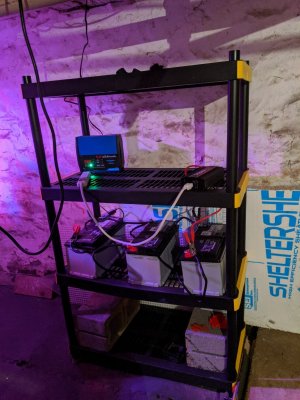When the 110v line is plugged in and energized, it moves the relay switch to use the electricity from the grid. When the grid goes down or break trips etc, the 110v line will be de-energized and automatically switch the relay to using the batteries.clarification. Because we use the DC power Supply when electricity is working, what’s the use of the 110V? Is there a relay that I can use for switching between battery operation and DC power outlet operation?
They do make DC only relays and you certainly can use one. You would just have to splice the wires running from a DC power source that you want to automatically switch to the battery backup. I just used the 110v version because it was easier for me to wire it into my 110v power strip than a DC source.



















